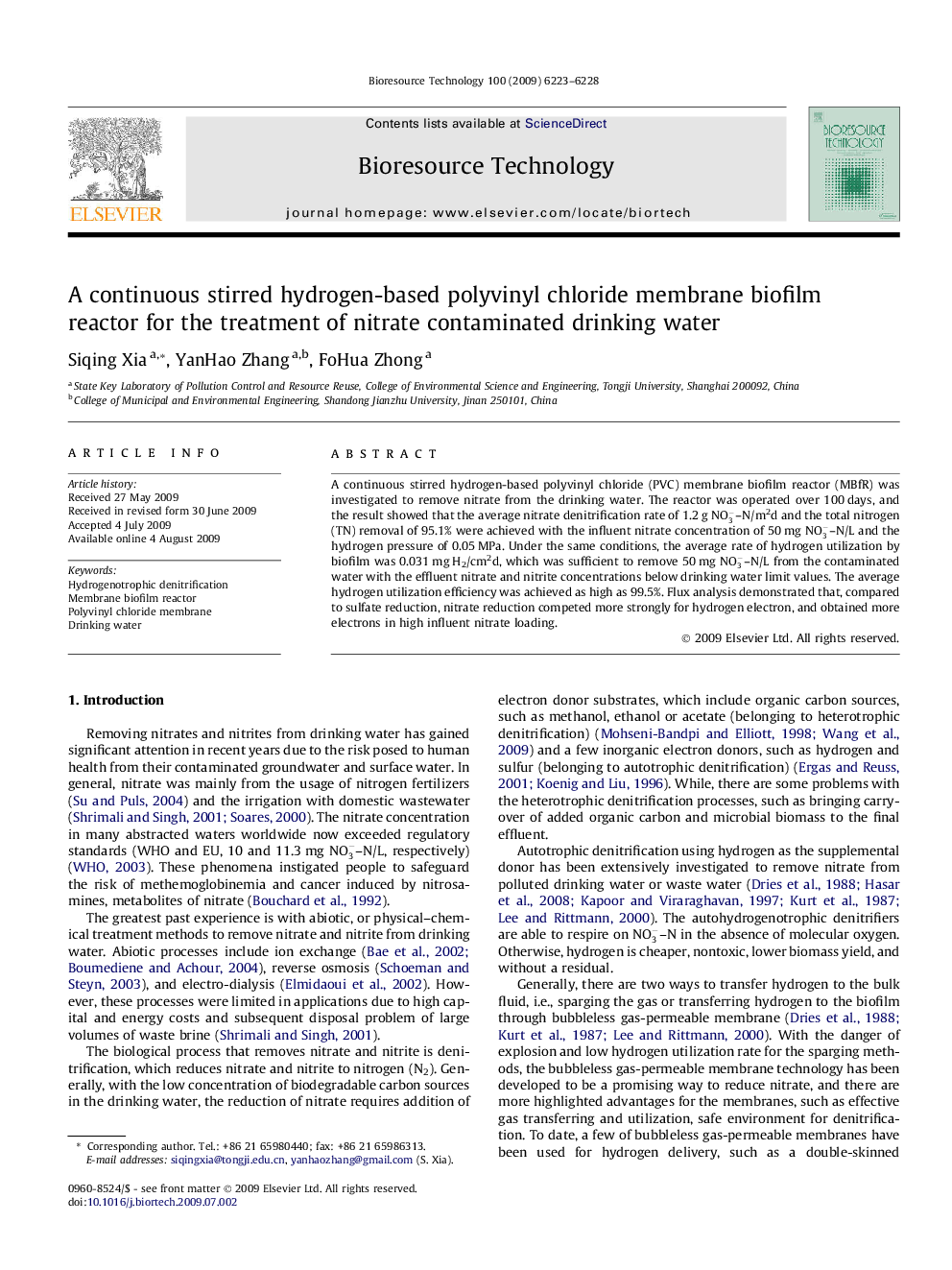| Article ID | Journal | Published Year | Pages | File Type |
|---|---|---|---|---|
| 683419 | Bioresource Technology | 2009 | 6 Pages |
A continuous stirred hydrogen-based polyvinyl chloride (PVC) membrane biofilm reactor (MBfR) was investigated to remove nitrate from the drinking water. The reactor was operated over 100 days, and the result showed that the average nitrate denitrification rate of 1.2 g NO3-–N/m2d and the total nitrogen (TN) removal of 95.1% were achieved with the influent nitrate concentration of 50 mg NO3-–N/L and the hydrogen pressure of 0.05 MPa. Under the same conditions, the average rate of hydrogen utilization by biofilm was 0.031 mg H2/cm2d, which was sufficient to remove 50 mg NO3-–N/L from the contaminated water with the effluent nitrate and nitrite concentrations below drinking water limit values. The average hydrogen utilization efficiency was achieved as high as 99.5%. Flux analysis demonstrated that, compared to sulfate reduction, nitrate reduction competed more strongly for hydrogen electron, and obtained more electrons in high influent nitrate loading.
